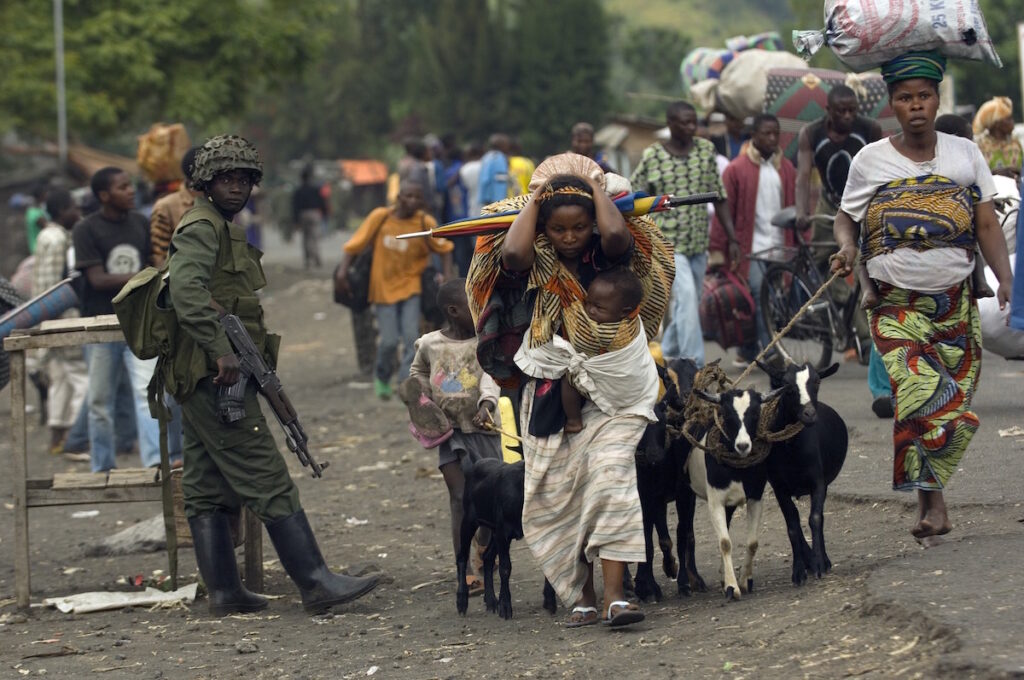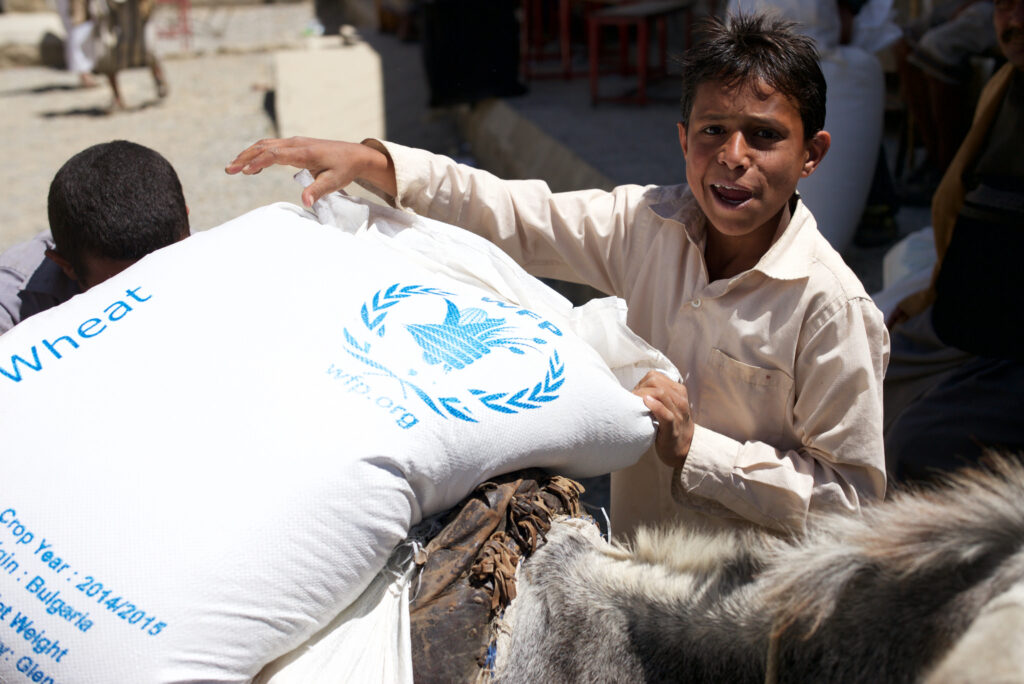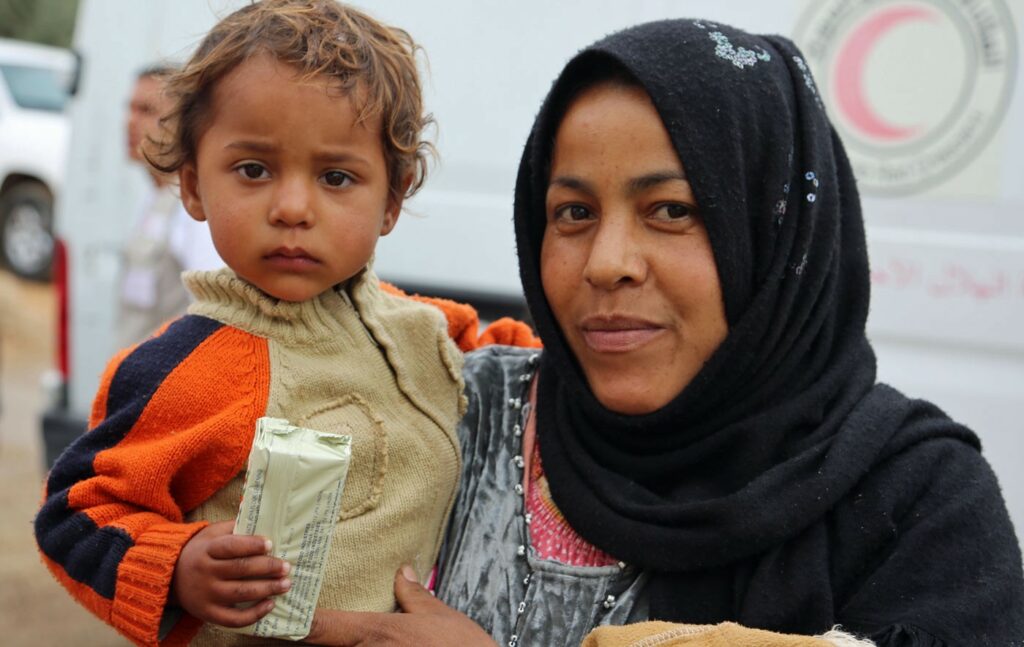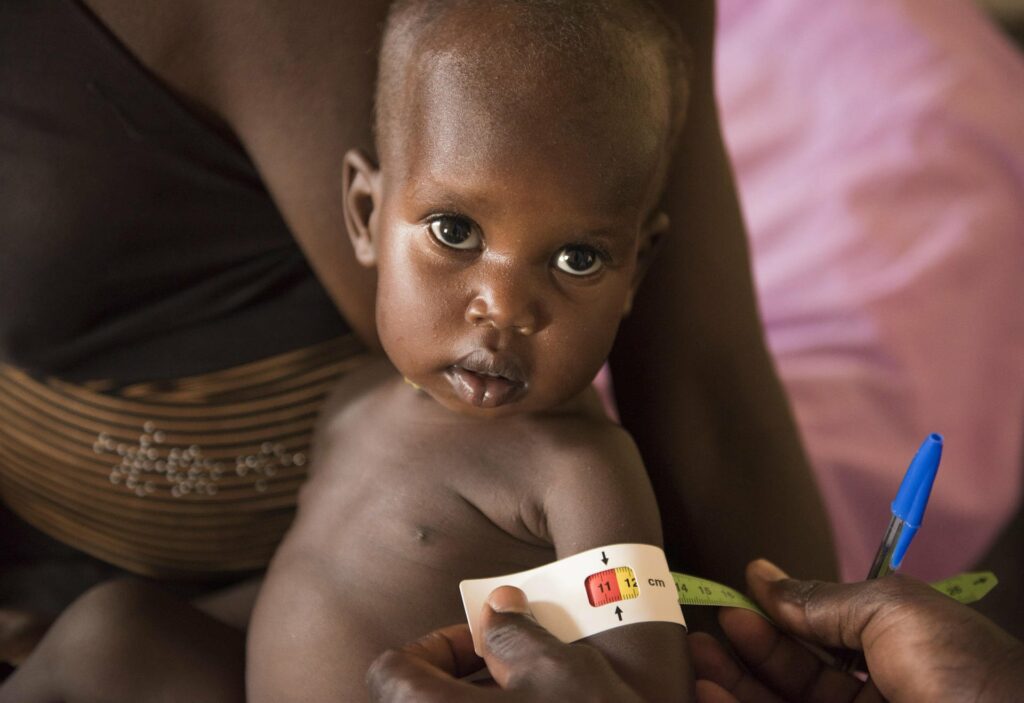It’s staggering to think that one in every 70 people worldwide is caught up in a crisis. And this year, around 132 million people will need urgent, life-saving humanitarian assistance in order to survive.
The UN has estimated that in 2019, US$25 billion will be needed to tackle humanitarian crises across the earth.
The International Rescue Committee produces a Emergency Watch List Report each year highlighting the countries they believe are at greatest risk of experiencing the worst humanitarian crises over the coming year.
This year there are 21 countries on that watch list, with the top ten ranked according to seriousness of the situation. In the majority of these countries, internal conflict has been the dominate factor leading to crisis.
Here are just five of the countries on this list for 2019 and what you need to know about them.
1. Democratic Republic of the Congo (DRC)

The DRC is a nation on tenterhooks.
Not only is the country currently in political turmoil after December elections, but in 2018, DRC saw the second biggest Ebola outbreak in history. An outbreak that since August 2018, infected 595 congolese and claimed 342 lives.
After enduring on and off conflict for over two decades, DRC is now one of the countries worst-affected by conflict displacement.
During 2017, 1.7 million people were forced to flee from their homes.
The number of people living in crisis levels of food insecurity reached 13.1 million in mid-2018, up from 7.7 million in late 2017 (IRC, 2018).
And of course, children are the most severely impacted in the midst of this.
The Kasai region in south-central DRC is currently experiencing the most severe food insecurity in the country, reflecting its experience of major politically driven conflict in 2016-2017.
Latest estimates suggest that 7 million children have been affected by the conflict.
The UN World Food Programme reports that 300,000 children are malnourished and at risk of dying.
World Vision Australia is on the front line in the Kasai region where they have been working since 2017, and are one of the key partners working with the UN World Food Programme in Kasai. They have distributed food and cash relief to over 400,000 people.
With severe doubts cast over the legitimacy of the surprise election of Felix Tshisekedi, the nation now looks set to descend into further chaos.
The African Union has just announced Continental leaders will meet at AU Headquarters in Ethiopia this week to discuss the election results and disputes.
2. Yemen

In 2018, the UN declared that Yemen was ‘the world’s worst humanitarian crisis’ and going into 2019 this prediction looks to be solidified.
Since the civil war started in 2015, the situation in Yemen has gone from bad to worse.
It is now estimated that 80% of the population (that’s 24 million Yemenis) are in need of some kind of humanitarian assistance (OCHA). Food security continues to be the biggest issue.
An assessment in late 2018 found that 15.9 million people (53% of Yemenis) were experiencing crisis Levels of food insecurity or worse. This included 63,500 people at the catastrophe level. Yemen is also suffering from a cholera outbreak that has affected over 1.2 million people since April 2017 (IRC 2018).
A UN brokered ceasefire was confirmed in December, between Houthi representatives and the Yemeni government to redeploy forces outside Hodeidah and its ports, allowing humanitarian access to the country. But since then both parties have accused the other of violating the agreement and carrying out attacks.
Just this week it was reported that the district of southern Hodeida, has received it’s first delivery of food in six months.
The WFP said that a slowdown in fighting in the province allowed UN to deliver more than 3000 tonnes of food to two areas for the first time since July.
Save the Children are just one of the aid organisations that has been working on the ground, addressing malnutrition and other vulnerability of children stuck in the conflict.
3. Syria

It’s easy to become weary in hearing news about Syria. This nation has been so severely besieged and shattered over the years that it’s hard for any individual to grasp the magnitude of the devastation.
Since 2011, Health and education services have collapsed and conflict has created one of the largest strongholds of displaced persons in the world.
The humanitarian impact of this complex war has been beyond catastrophic. 6.2 million Syrians are displaced internally (OCHA) and a further 5.6 million are registered as refugees elsewhere in the region (UNHCR), out of a pre-war population of around 23 million.
The International Rescue Committee predict that in 2019 Northwest Syria remains at risk of major displacements and further destruction of infrastructure, as conflict persists. Civilians may be vulnerable to airstrikes and have few options of places to flee to.
Conditions for those in refugees camps continue to be life-threatening. Just days ago it was reported that at least 15 displaced children have died due to freezing weather conditions and lack of medical care.
The UN children’s fund confirmed that eight babies in the Rukban camp on the Jordanian border had died from hypothermia in the last month. A further seven children, had died from the cold in recent weeks as their families fled the battle for Hajin, one of the last areas held by Islamic State in eastern Syria.
4. South Sudan

The civil war raging in South Sudan since 2012 means it continues to be a nation in crisis.
The war has already claimed 380,000 casualties.
While a peace agreement was signed in September last year between warring parties, many experts say this is fragile and likely to fall apart, similar to the one signed in 2015.
Violence persists throughout the country, leading to 1.96 million people displaced internally, 2.47 million refugees, and 6.1 million people facing crisis levels of food insecurity or worse (IRC, 2018).
Climate Change is also a huge concern for the nation, as according to the Climate Change Vulnerability Index, South Sudan is one of the countries most vulnerable to Climate Change in the world.
Up to 95 percent of people in South Sudan, or more than 11 million people, depend on climate sensitive sectors, including agriculture, forestry resources and fisheries for their livelihoods. The man-made crisis in South Sudan has pushed the country behind on multiple fronts, ‘hampering agricultural production, disrupting livelihoods and the coping abilities of communities’ (UNDP, 2017).
The International Rescue Committee believes that even without an escalation in fighting, a significant proportion of South Sudanese will struggle with food security this year. A collapse of the peace deal could lead to a re-escalation in the conflict and a drastic rise in humanitarian need.
5. Bangladesh (Cox’s Bazaar)

Cox’s Bazaar in Bangladesh dominated headlines in 2018, as the atrocities committed against the Rohingya Muslims saw a mass exodus from Myanmar and turned Cox’s Bazaar into the world’s largest refugee settlement.
Now with ongoing natural disasters and prevalent malnutrition, this crisis is far from over.
It’s estimated that: over 23,000 people are at risk of landslides; 93% of the population lives below the UNHCR emergency standard of 45 square metres per person; and acute malnutrition among children of 6-59 months exceeds the emergency threshold of 15% (UNHCR). There are also some initial indications of militants trying to recruit from among residents of the camps in Cox’s Bazaar (IRC, 2018).
In 2019 these Rohingya refugees will be extremely exposed to natural disasters that could cause displacements and threats to their safety. There is also the risk of premature returns enforced by Bangladeshi authorities that could lead to significant threats to the safety of individuals who go back. As the displacement drags on, the cramped and unsanitary conditions in the camps could increase the risk of disease spreading (IRC 2018).
This week, it was reported that at least 1,300 Rohingya Muslims have crossed into Bangladesh from India since the start of the year, as fears of deportation to Myanmar spark another exodus.
The round-ups in India, and fear of deportation to Myanmar, have driven even more of the stateless Muslims into Cox’s Bazar, meaning the crisis could continue to get worse.
————-
This week, a new humanitarian checklist was launched in Australia by nine leading aid organisations, aiming to hold the federal government accountable for its efforts protecting children in conflict.
The checklist outlines a range of tools available to the Australian government and NGOs to prevent, influence and respond to conflict-related crises.
The Australian Checklist for Action will be used to assess whether Australia has taken steps such as: applying diplomatic pressure on states responsible for rights violations; providing humanitarian funding in line with Australia’s responsibilities; and banning the export of weapons that could be used to violate human rights. It’s been compiled by organisations such as World Vision, Safe the Children, Act for Peace and more.
You can download a copy of the checklist here.
Image Sources: © Lynsey Addario/Corbis, World Food Programme, DFAT, Charles Lomodong/IRC, Julien Harneis/Flickr